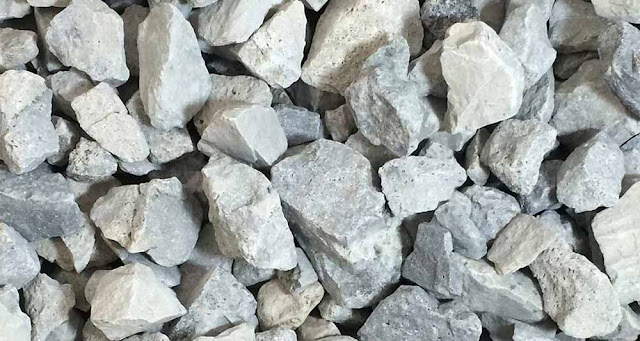The Science Behind Limestone Formation: Nature's Masterclass
 |
| Limestone |
Limestone, with its stunning array of colors and patterns, is a fascinating rock that holds clues about Earth's geological history. Understanding the science behind limestone formation takes us on a journey through millions of years, revealing the intricate processes that have shaped our planet.
Limestone is primarily
composed of calcium carbonate, a mineral that originates from the remains of
marine organisms like shells, coral, and microorganisms. These organisms
extract calcium and carbonate ions from the surrounding water to build their
protective structures. Over time, these accumulated remains undergo compaction
and lithification, transforming into limestone.
The formation of
limestone often occurs in marine environments, where the accumulation of
calcium carbonate-rich materials takes place. In shallow tropical waters, for
instance, the growth of coral reefs contributes to the formation of vast
limestone deposits. As corals die and accumulate, their calcium carbonate
skeletons become cemented together, forming sturdy limestone structures.
Another significant
process involved in limestone formation is the precipitation of calcium
carbonate from water. In some cases, water rich in calcium ions and carbonate
ions flows through underground caves or springs. As this water evaporates or
encounters changes in temperature and pressure, calcium carbonate precipitates
out, gradually building up layers of limestone.
Different types of
limestone can form depending on specific environmental conditions. For
instance, chalk, a soft and porous type of limestone, is formed from the
remains of microscopic marine plankton. Other varieties, such as travertine and
tufa, result from the precipitation of calcium carbonate from mineral-rich
water, often seen in limestone caves and stalactite formations.
Geological processes
like tectonic activity and uplift can also play a role in limestone formation.
When tectonic forces uplift marine sedimentary rocks, including limestone, they
expose them to erosion and weathering. Over time, these processes can shape
limestone formations into majestic landscapes, such as limestone cliffs, karst
landscapes, and cave systems.
Understanding the science
behind Limestone
formation has practical applications in various fields. Geologists and
paleontologists study limestone to gain insights into past environments,
ancient ecosystems, and climate change. It also has economic significance, as
limestone deposits serve as valuable sources of building materials, including
construction aggregates, dimension stone, and cement.
The Limestone
plays a critical role in the carbon cycle. Through the process of carbonation,
limestone can absorb carbon dioxide from the atmosphere, acting as a natural
carbon sink. This process occurs when rainwater combines with carbon dioxide to
form a weak acid that reacts with limestone, dissolving it and ultimately
capturing carbon dioxide in the form of bicarbonate ions. This natural
mechanism helps regulate atmospheric carbon dioxide levels and mitigates
climate change.
The science behind
limestone formation showcases the intricate interactions between living
organisms, geological processes, and the environment. It reminds us of the
immense timescales and forces that have shaped our planet. By studying and
appreciating the science behind limestone, we gain a deeper understanding of
Earth's history, its geological diversity, and the interconnectedness of our
natural world.



Comments
Post a Comment